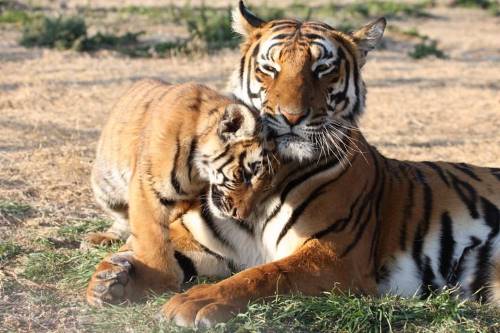The South China tiger (Panthera tigris amoyensis) is one of the rarest of the big cats. Scientists believe that the south china tiger is probably extinct in the natural habitat. The last of the tiger was seen 25 years ago. Chances are remote that one can ever find South china tigers again in the wild.
Where Do South China Tigers Live Map?
South china tiger previously thought to occupy a wide range—from North China all the way to the South. They occupied as much as 1,200 miles in China. South china tigers mainly occurred in Jiangxi, Sichuan Provinces, Zhejiang Provinces, as well as Qinling Mountain. Historically they also lived in the Yunnan Provinces, Guangxi and Guangdong.
South China Tiger Habitat
The tiger made homes in wet tropical and subtropical rainforests. They preferred to live in places which are not only abundant in vegetation but in water too. Sadly however we do not know much of tiger’s habitat at all since the tiger is extinct in the wild. Not only the south china tiger is extinct in the wild, its habitat is turning out to be redundant too. Humans have long destroyed the tiger’s habitats for agricultural purposes. Should tigers be living in the wild they would have suffered a lot probably at the hands of humans. The tiger’s habitat has potentially lost much of its original characteristics. As of now, there are only rugged and steep terrains left for the tigers to survive in China.
 Where Do South China Tigers Live in Captivity?
Where Do South China Tigers Live in Captivity?
Currently south china tigers are living nowhere in the wild. All of them are bred in captivity. Back in 1986, Chinese zoos raised as many as 40 south china tigers. The present-day tigers are thought to be the descendants of those captive tigers. The south china tiger population in captivity was increased to 57 individuals in 2005. The numbers went up to 72 tigers in 2007. The first of the south china tiger to be born outside China is living in South Africa. The tiger was raised in Laohu Valley Reserve, South Africa. The South African Reserve produced as many as 19 tigers till 2016. While the world’s media welcomed the news, conservationists are beginning to be more concerned about the increased inbreeding in zoos.
References
Tilson Ronald, Philip J. Nyhus, Tigers of the World: The Science, Politics and Conservation of Panthera tigris; Academic Press, 30-Nov-2009.











